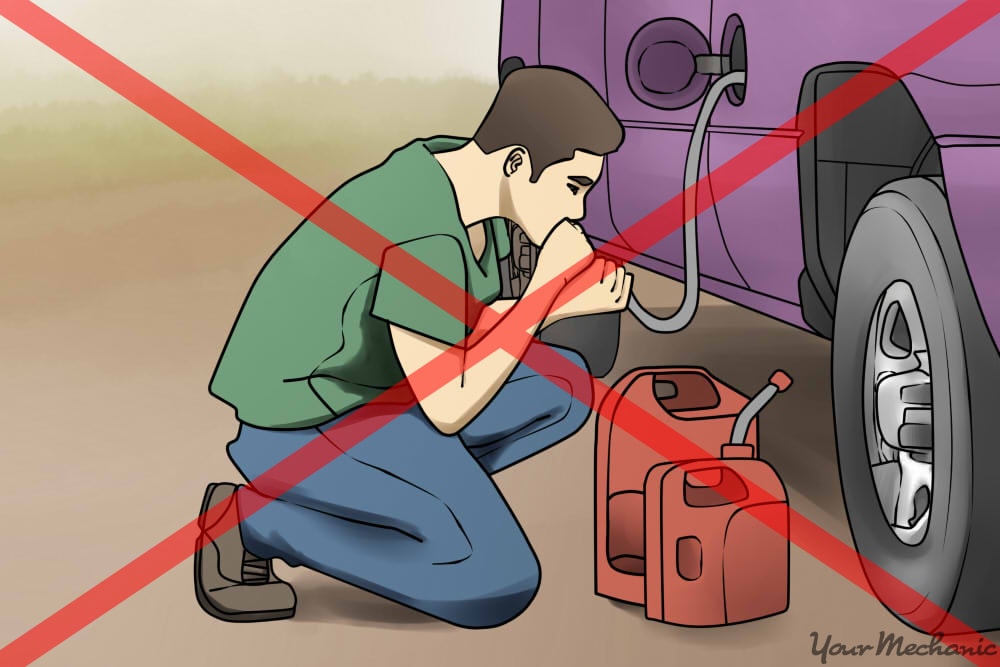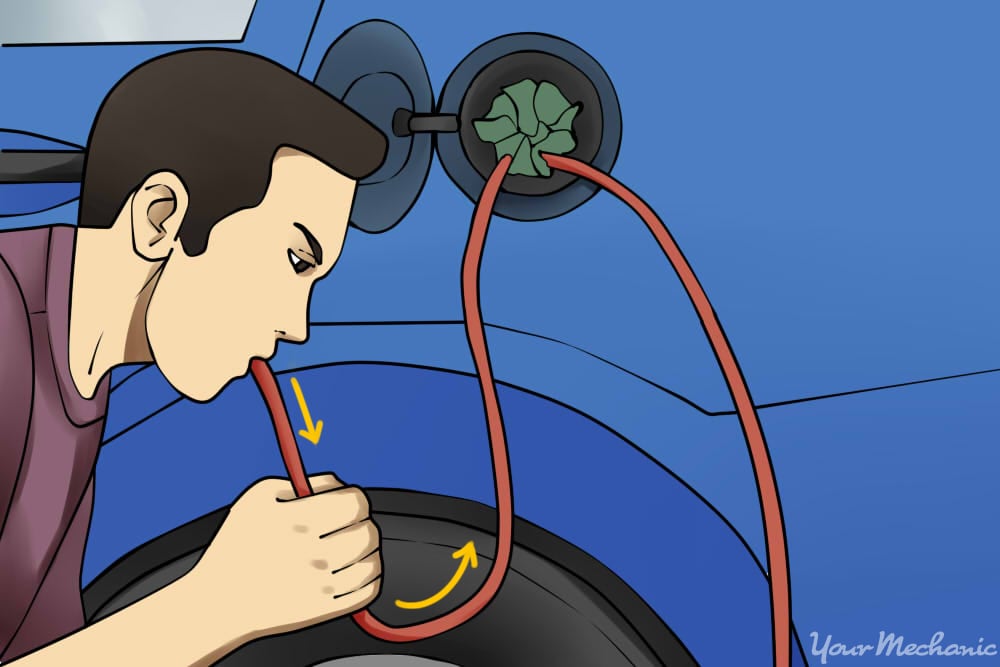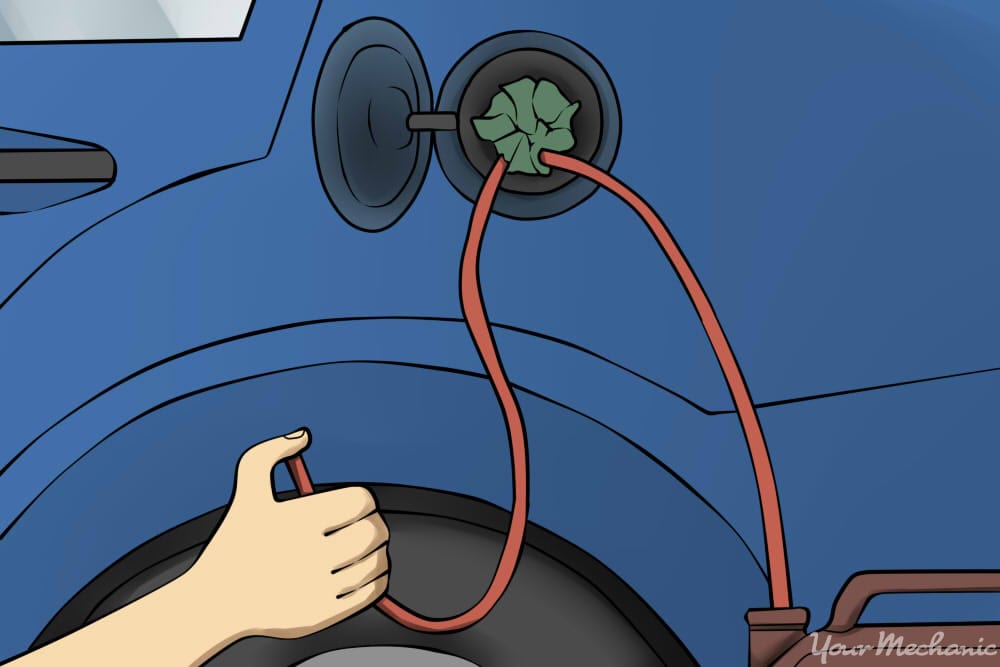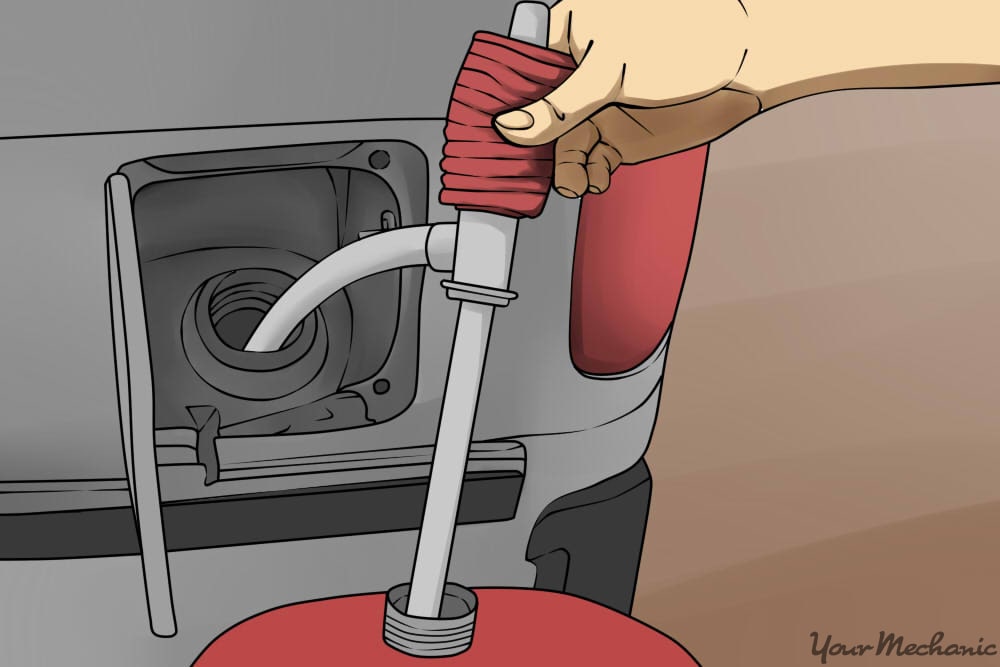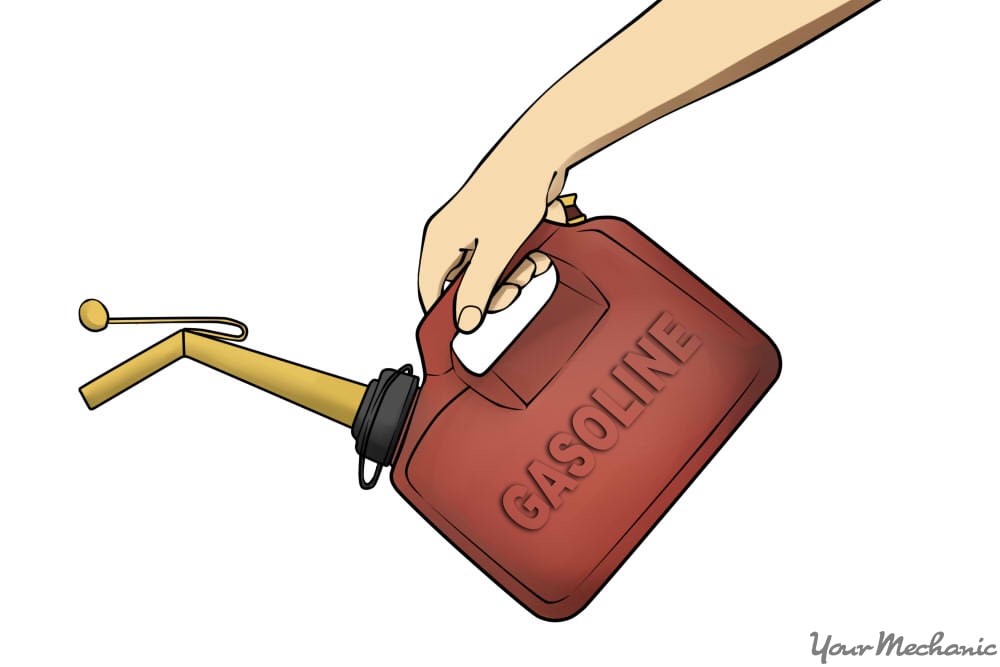

It is often necessary to drain the fuel from a car’s gas tank in some of the following situations:
If you run out of gas while far away from a gas station, you may want to siphon gas from another vehicle into yours.
You may want to drain out the fuel before storing a car away for winter.
You may want to transfer fuel from one vehicle to another vehicle at home.
Fuel in the tank may have been contaminated and must be removed before refilling the tank.
- Warning: There are many dangers associated with manually siphoning gas.
The most commonly known method of siphoning gas is the most dangerous one. In this method, you had to put a hose in the fuel tank and draw the gas out using your mouth ﹘ understandably, this was not a pleasant experience or a safe procedure by any means. This method is dangerous and is not advisable due to the following reasons:
Reason 1: Inhalation of gasoline fumes. Exposure to gasoline fumes can harm all the major organs in our bodies. Direct inhalation of the fumes can damage your lungs and cause carbon monoxide poisoning.
Reason 2: Can cause loss of consciousness in risky situations. Breathing in gas vapours can cause dizziness, fainting and in extreme cases, brain damage. Using this method when you are alone on the side of a highway or away from medical attention is very dangerous.
Reason 3: Risk of swallowing gasoline. Gasoline will probably get into your mouth using this method. Gasoline is toxic to ingest. Gasoline poisoning is extremely dangerous and requires emergency medical attention.
Reason 4: Risk of fire. It is extremely dangerous to siphon gas or handle fuels next to open flames or where people are smoking. It is of utmost importance that you take the correct safety precautions before doing so.
- Warning: This method is extremely risky and dangerous. The only reason to use this method would be if the situation were extremely pressing and there was no time for a better solution, or if the length of tube available to use is not sufficient to cut into two.
It is important to know how to siphon fuel from a gas tank and do it correctly and safely. You can be prepared for any fuel emergency by being aware of the recommended siphoning methods and following them correctly.
It is advisable to keep rubber tubing and a siphon pump in the trunk of your car when traveling long distances so that you will not need to siphon gas using your mouth.
Here are a couple of methods to siphon gas that are safer than using your mouth.
Method 1 of 2: Using two tubes to siphon gas
In this method, two lengths of flexible rubber tubing are used to siphon gas into a fuel-safe container. A gas can works well as a fuel-safe container because it can be closed and won’t allow the fuel vapors to escape.
Warning: Gasoline vapors are explosive and hazardous to breathe.
Tip: Use clear tubing to make it easier to monitor the flow of gas.
Materials Needed
- Gas can
- Air pump or small air compressor
- 6 to 12 feet of rubber tubing (1/4” to 3/8” diameter)
- Rag or soft cloth material
Once you have the required materials, here’s how it’s done:
Step 1: Connect the longer tube. Take two lengths of tubing - one longer than the other. Take the longer tube and connect one end to the gas tank and the other to the fuel container.
Step 2: Connect the shorter tube. Hold one end of the shorter tube in your hand while putting the other end in the fuel tank beside the longer tube.
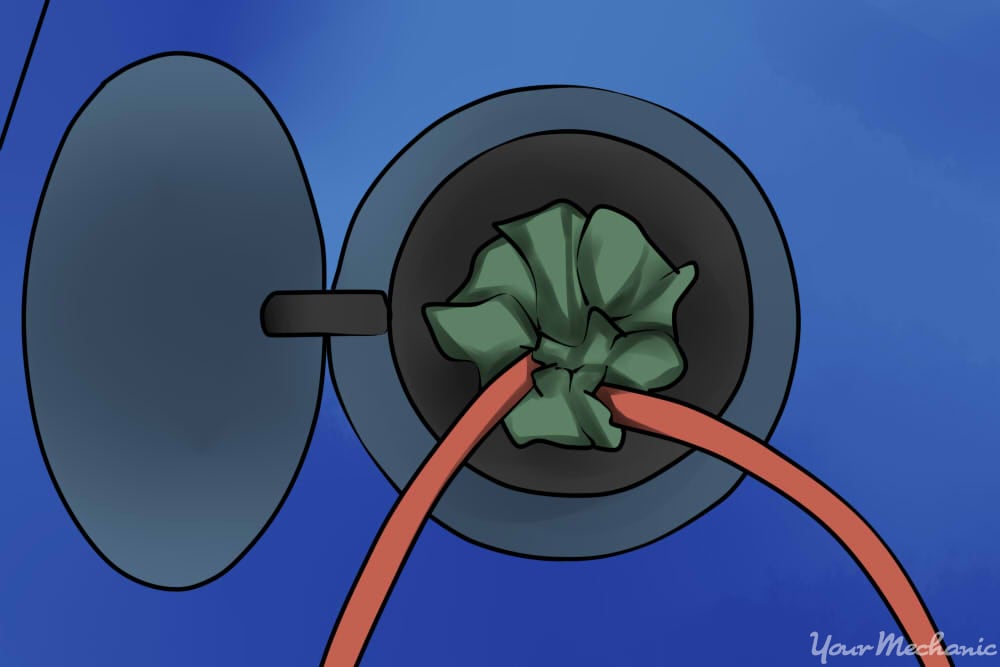
Step 3: Seal the fuel filler neck. Find a rag or any other soft material to fill in the space around the tubes in the fuel filler neck and create a seal. This will help keep the pressure that was created by blowing air into the tank from escaping around the tubes.
Step 4: Blow air into the shorter hose. Force air into the free end of the shorter hose, either with a low pressure air pump, or by blowing air in with your mouth.
- Warning: Do not use a high pressure pump or the fuel may come out of the tank in large amounts and cause fuel tank and system damage.
- Warning: If you are using your mouth, be careful not to inhale from the tube. Use your thumb to cover the end of the hose as soon as you stop exhaling to prevent the fumes from entering your lungs.
The low pressure should push gas out of the other tube and into the container.
Step 5: Stop forcing air into the hose. Once the fuel is flowing, no more pressure is needed. The fuel will continue to flow unless the hose is kinked, or the tube is removed from the fuel tank.
Step 6: Remove the tubes. Remove both tubes from the gas tank when you’re finished, and don’t forget to put the gas cap back on before driving.
Method 2 of 2: Using a siphon pump
It is useful to keep a siphon pump in the trunk of your car if do a lot of travelling in rural areas or if you live far away from a gas station. It is also a handy tool for a home garage.
Here’s how you can use a siphon pump to remove gas from a fuel tank:
Materials Needed
- Gas can
- Siphon pump
Step 1: Prepare to siphon the gas. Get a fuel-safe container to pump the gas into and remove the gas cap of the vehicle.
Step 2: Understand the workings of the pump. Each end of the siphon pump has a tube coming out. Look at the markings on the pump to find the tube that must be placed in the gas tank. Read any instructions that came with the siphon pump.
- Tip: Some pumps may have a handle like a bike pump, while others just have a squeezable plastic or rubber bulb. You can also use electric or battery operated gas siphon pumps to transfer the fuel.
Step 3: Connect the tubes. Place one tube in the fuel tank and the other tube in the fuel-safe can.
Step 4: Squeeze the bulb. Squeeze the bulb a few times, to start the siphon action. You can stop squeezing the bulb when the gas starts flowing. The gas should flow through the tubing until the tubing is kinked or the tube is removed from the gas tank. Continue transferring the fuel till you have the desired amount.
Step 5: Take the pumping tube out of the fuel tank. Replace the gas cap after you finish.
Get a certified mechanic to take a look at your car if you find that the fuel tank is leaking or if the fuel door is not opening and closing correctly.



